This website uses cookies so that we can provide you with the best user experience possible. Cookie information is stored in your browser and performs functions such as recognising you when you return to our website and helping our team to understand which sections of the website you find most interesting and useful.
Home Care In Danbury, CT

They say that your golden years are the best years of your life. For most older Americans, that's how it should be - a time to relax, reflect, and live life in a familiar place. After all, senior citizens in the U.S. have worked tirelessly to build a better economy, serve their communities, and raise families.
However, as seniors grow older, completing daily tasks like showering and enjoying activities such as visiting the historic Main Street Historic District gets harder without someone by their side. Unfortunately, many older Americans aren't able to rely on their adult children for help. The reality in today's world is that family members do not have the skills or time to dedicate to caring for their parents. That's where Always Best Care Senior Services comes in.
Our in-home care services are for people who prefer to stay at home as they grow older but need ongoing care that family or friends cannot provide. More and more older adults prefer to live far away from long-term, institutionalized facilities and closer to the place where they feel most comfortable - their home. Home care in Danbury, CT is a safe, effective way to give your loved ones the care they need when they need it the most.

 Home Care Services
Home Care Services
- Home Care in Danbury, CT
- The Always Best Care Difference
- Types of In-home Care in Danbury, CT
- Benefits of Home Care in Danbury, CT
- Aging in Place: The Preferred Choice for Most Seniors
- Affordable Care Plans
- Compassionate Care. Trusted Caregivers
- Assisted Living Referral Services
- Taking the First Step with Always Best Care
 Service Areas
Service Areas
The Always Best Care Difference
Since 1996, Always Best Care has provided non-medical in-home care for seniors to help them maintain a healthy lifestyle as they get older. We are proud to have helped more than 25,000 seniors maintain higher levels of dignity and respect. We focus on providing seniors with the highest level of in-home care available so that they may live happily and independently.
Unlike some senior care companies, we genuinely want to be included in our clients' lives. We believe that personalized care is always the better option over a "one size fits all" approach. To make sure our senior clients receive the best care possible, we pair them with compassionate caregivers who understand their unique needs. That way, they may provide care accordingly without compromising their wellbeing.
The Always Best Care difference lies in life's little moments - where compassionate care and trustworthy experience come together to help seniors live a fruitful, healthy life. Whether you are an aging adult that can't quite keep up with life's daily tasks or the child of a senior who needs regular in-home services, Always Best Care is here to help.
“Wonderful agency, great caregivers, responsive, personal. Would have given 5+ but please pay your”
“It is a pleasure to write this! The BEST way to describe your staff:--Pleasant—congenial. Choosing”
“I am writing on behalf of my family to tell you how appreciative we are”
“Your service was timely and most satisfactory !, I'll definitely keep you in mind for”
“Thank you so much for everything. Mom is not ready to take the step to”
“Thank you so much for your kind, personalized service. My mother was always resistive to”
“This company is courteous and very compassionate when it comes to caring for your loved”
“My experience interacting with Always Best Care far surpassed my expectations. They’re polite and courageous”
“I am sending you some of my thoughts about Always Best Care now that I”
“I have learned so much with having you and your staff care for my mother.”
“Excellent company and high levels of customer service!”
“I forgot to tell you that I miss your compassion toward your people. You positive”
“I just wanted to shoot you a quick email expressing our thoughts about Mary, who”
“Thank you so much for your kind, personalized service. My mother was always resistive to”
“I am a current client of this provider Thank you for all of your help over”
“Other Your service was timely and most satisfactory! I’ll definitely keep you in mind for future”
“I am a past client of this provider Shame on me for not writing sooner. The”
“I am a past client of this provider My Mom’s last 15 months were made easier”
“Other We would like to express our appreciation and thanks for the in-home care that Always”
“Other I just wanted express our thoughts about Mary, who was the caregiver for the weekend.”
“I am a current client of this provider Thank you so much for your kind, personalized”
“I interviewed this provider I have learned so much with having you and your staff care”
“I am a past client of this provider I was so happy with the services which”
“Excellent company and high levels of customer service!”
“Wonderful agency, great caregivers, responsive, personal. Would have given 5+ but please pay your caregivers every week not every other week. They are dedicated and deserve to be paid weekly. They are the only agency that pays biweekly…. Thank you”
“It is a pleasure to write this! The BEST way to describe your staff:--Pleasant—congenial. Choosing Always Best Care was one our better decisions. You have sent us the perfect people to help my wife. I am grateful for that. Best wishes for continued success.”
“I am writing on behalf of my family to tell you how appreciative we are of Always Best Care and your services. These have not been the best of times for my family and especially hard on my Mom but we take great comfort knowing you are there to help. Our caretaker has been wonderful since my Dad was sent to River Glen in Southbury and from the very beginning of our ordeal. My Mom is extremely protective of my Dad and has always requested for Judy to help out with my Dad. To me that is the biggest proof of our confidence that has been my Mom's faith in her. Anything we have asked of her she has delivered and shown what most can't - that she really cares. Your Professional staff is a pleasure to work with - adapting schedules, applying payments quickly, and always courteous. I felt like great service should be made aware of and should set a standard that Always Best Care always seems to meet..”
“Your service was timely and most satisfactory !, I'll definitely keep you in mind for future needs.”
“Thank you so much for everything. Mom is not ready to take the step to accepting in-home help yet, but I can assure you that when she is, you will be our agency of choice. Knowing that you will be able to assist us when the time comes makes me feel so much better about all of this. For me, it makes a big difference to actually know someone who is in charge and I think that will make a difference with my Mom too.”
“Thank you so much for your kind, personalized service. My mother was always resistive to someone coming into her home to help care for her, but she is very, very pleased. Not only does she have someone to keep her company and meet her physical needs—her kitchen is looking cleaner than I have seen it in a while. Thank you again. Your kind manner was reassuring to my mother and to me, and you have made the process of caring for my mother at home easy and provided me with much needed relief so that I can actually return to work with a calm mind.”
“This company is courteous and very compassionate when it comes to caring for your loved ones. They are available 24/7 to help you fill all your caregiving needs and have a great pool of caregivers. The office staff is friendly, very supportive and they will go above and beyond to provide their customers the best service around. I would highly recommend them for any of your Homecare needs.”
“My experience interacting with Always Best Care far surpassed my expectations. They’re polite and courageous and always available 24/7 to answer questions and respond in an emergency situation.”
“I am sending you some of my thoughts about Always Best Care now that I have had time to reflect. Mom’s move to Assisted Living has gone very well and I’d like you to know:--From the initial home meeting and throughout my mother’s care, everyone was extremely personable, professional and knowledgeable of the home care industry. --ABC matched caregivers to my Mother’s needs and personality and we (and my Mother) were very happy with the care received and with the communication between caregivers and family.--Although my Mother is in Memory Care now, she still remembers ‘her ladies’ that not only assisted in her care, but more importantly, offered friendship. We would be very happy to be used as a reference if needed!”
“I have learned so much with having you and your staff care for my mother. I never would have expected her to rally so much after my father’s death. But it’s amazing what loving care can do –just amazing! Tracy and I cannot thank you enough – you have helped us see how to make our mother’s last days as pleasant and meaningful as possible–which is not only good for her but also for her whole family. I and my boys and husband, and my sister and her son and his family, we can all have time to connect with my mother that will surely enrich our lives forever—and that is such a precious gift! Thank you”
“Excellent company and high levels of customer service!”
“I forgot to tell you that I miss your compassion toward your people. You positive and helpful approach toward them is admirable. I did not have such luck with the local companies in MA, lacking good organization and consideration to the clients and the care givers. It is not an easy job accomplish such a success like yours.”
“I just wanted to shoot you a quick email expressing our thoughts about Mary, who was the caregiver for the weekend. We all thought she was wonderful!! I think her biggest strength is that she “sees the work”, needs little/to no direction, offers to take things out of our hands, is a true-go-getter. For Billie, this type of help is great since she feels like she can take some time to rest and trust all is okay. Mary works hard and is also very patient. I really think Mary is a natural dealing with elderly. She is patient and kind! Anyway, what I wanted to ask is if Mary can be the consistent caregiver for the weekends. The other 4 caregivers that I have met are also very nice. We would like Mary as much as possible as she is punctual, and as I mentioned before, ‘sees what needs doing”. She is focused on what she can do to help. She doesn’t just sit there next to Bill, she has eyes in the back of her head and goes the extra mile. Anything that needs to get done, she says “no wait, let me do it’—if she hasn’t already initiated it herself. She seems to have endless energy and never complained. I just felt compelled to drop you a this note to let you know how impressed we were with her. Thanks”
“Thank you so much for your kind, personalized service. My mother was always resistive to someone coming into her home to help care for her, but she is very, very pleased. Not only does she have someone to keep her company and meet her physical needs—her kitchen is looking cleaner than I have seen it in a while. Thank you again. Your kind manner was reassuring to my mother and to me, and you have made the process of caring for my mother at home easy and provided me with much needed relief so that I can actually return to work with a calm mind.”
“I am a current client of this provider Thank you for all of your help over the last few weeks. Your caregivers were all terrific and I just don’t know what we would have done without you.”
“Other Your service was timely and most satisfactory! I’ll definitely keep you in mind for future needs.”
“I am a past client of this provider Shame on me for not writing sooner. The days go by so fast –and thanks to your good care I am back to doing things for myself and being busy. Did my own deck this year! And other gardening ---feels good! Have started walking 3 times a week at the track! The big 90 will be here in October ---and I am going to be ready to celebrate it! Thank you again for all your help. It’s good to know it is there when I need it.”
“I am a past client of this provider My Mom’s last 15 months were made easier with the diligent and devoted care provided by Scheryl and your support to come up with replacements when she needed time off. Scheryl was caring and compassionate for both my Mom and her sister when she came to stay. They had a really nice bond. Both the ladies were ever grateful for Scheryl’s attention, conversation, cooking and friendship. Larry and I send best wish and sincere thanks!”
“Other We would like to express our appreciation and thanks for the in-home care that Always Best Care is providing our parents. You have guided us through this very difficult time and have helped us deal with my mother’s illness and her inability to care for my dad. Your caregivers are very capable and caring, and your staff is competent and thorough. We believe this makes your company invaluable to families with loved ones in need of assistance. We would recommend Always Best Care to anybody in search of quality care for their loved one. Thank you for all you and your staff do.”
“Other I just wanted express our thoughts about Mary, who was the caregiver for the weekend. We all thought she was wonderful!! I think her biggest strength is that she “sees the work”, needs little/to no direction, offers to take things out of our hands, and is a true-go-getter. For Billie, this type of help is great since she feels like she can take some time to rest and trust all is okay. Mary works hard and is also very patient. I really think Mary is a natural dealing with elderly. She is patient and kind! Anyway, what I wanted to ask is if Mary can be the consistent caregiver for the weekends. The other 4 caregivers that I have met are also very nice. We would like Mary as much as possible as she is punctual, and as I mentioned before, ‘sees what needs doing”. She is focused on what she can do to help. She doesn’t just sit there next to Bill, she has eyes in the back of her head and goes the extra mile. Anything that needs to get done, she says “no wait, let me do it’—if she hasn’t already initiated it herself. She seems to have endless energy and never complained. I just felt compelled to drop you a this note to let you know how impressed we were with her. Thanks”
“I am a current client of this provider Thank you so much for your kind, personalized service. My mother was always resistant to have someone come into her home to help care for her, but she is very, very pleased with Betsy. Not only does she have someone to keep her company and meet her physical needs—her kitchen is looking cleaner than I have seen it in a while. Thank you again. Your kind manner was reassuring to my mother and to me, and you have made the process of caring for my mother at home easy, and provided me with much needed relief so that I can actually return to work with a calm mind.”
“I interviewed this provider I have learned so much with having you and your staff care for my mother. I never would have expected her to rally so much after my father’s death. But it’s amazing what loving care can do –just amazing! Tracy and I cannot thank you enough – you have helped us see how to make our mother’s last days as pleasant and meaningful as possible–which is not only good for her but also for her whole family. I and my boys and husband, and my sister and her son and his family, we can all have time to connect with my mother that will surely enrich our lives forever—and that is such a precious gift! Thank you”
“I am a past client of this provider I was so happy with the services which Angela provided! She was very courteous, hands-on and would do anything I asked her to do. She was pleasure. I enjoyed having her work for me.”
“Excellent company and high levels of customer service!”
What is Non-Medical Senior Care in Danbury, CT?

Home is where the heart is. While that saying can sound a tad cliche, it is especially true for many seniors living in America. When given a choice, older adults most often prefer to grow older at home. An AARP study found that three out of four adults over the age of 50 want to stay in their homes and communities as they age.

When you begin to think about why, it makes sense. Home offers a sense of security, comfort, and familiarity.

The truth is, as we age, we begin to rely on others for help. When a family is too busy or lives too far away to fulfill this role, in-home senior care is often the best solution. Home care services allow seniors to enjoy personal independence while also receiving trustworthy assistance from a trained caregiver.

At Always Best Care, we offer a comprehensive range of home care services to help seniors stay healthy while they get the help they need to remain independent. As your senior loved one gets older, giving them the gift of senior care is one of the best ways to show your love, even if you live far away.

Types of Elderly Care in Danbury, CT
To give our senior clients the best care possible, we offer a full spectrum of in-home care services:

Personal Care Services
If your senior loved one has specific care needs, our personal care services are a great choice to consider. Personal care includes the standard caregiving duties associated with companion care and includes help with tasks such as dressing and grooming. Personal care can also help individuals with chronic conditions like diabetes.
Common personal care services include assistance with:
- Eating
- Mobility Issues
- Incontinence
- Bathing
- Dressing
- Grooming


Home Helper Services
Sometimes, seniors need helpful reminders to maintain a high quality of life at home. If you or your senior has trouble with everyday tasks like cooking, our home helper services will be very beneficial.
Common home helper care services include assistance with:
- Medication Reminders
- Meal Preparation
- Pet Care
- Prescription Refills
- Morning Wake-Up
- Walking
- Reading


Companionship Services
Using this kind of care is a fantastic way to make life easier for you or your senior loved one. At Always Best Care, our talented caregivers often fill the role of a companion for seniors. That way, older adults can enjoy their favorite local activities, such as visiting Lake Kenosia Park with friends while also receiving the care they need daily or weekly.
Common companionship services include:
- Grocery Shopping
- Transportation to Appointments
- Nutritional Assistance
- Conversation
- Planning Outings
- Completing Errands
- Transportation to Community
- Events and Social Outings


Respite Care Services
According to AARP, more than 53 million adults living in the U.S. provide care to someone over 50 years old. Unfortunately, these caregivers experience stress, exhaustion, and even depression. Our respite care services help family caregivers address urgent obligations, spend time with their children, and enjoy nearby activities. Perhaps more importantly, respite care gives family members time to recharge and regroup. Taking personal time to de-stress reduces the risk of caregiver burnout. So, if you've always wanted to eat at the local 4 Seasons Mediterranean Restaurant - Danbury CT or visit Hearthstone Castle, don't feel bad. Doing so is great for both you and your loved one.
At the end of the day, our goal is to become a valuable part of your senior's daily routine. That way, we may help give them the highest quality of life possible. We know that staying at home is important for your loved one, and we are here to help make sure that is possible.
If you have been on the fence about non-medical home care, there has never been a better time than now to give your senior the care, assistance, and companionship they deserve.

Benefits of Home Care in Danbury, CT
Always Best Care in-home services are for older adults who prefer to stay at home but need ongoing care that friends and family cannot provide. In-home care is a safe, effective way for seniors to age gracefully in a familiar place and live independent, non-institutionalized lives. The benefits of non-medical home care are numerous. Here are just a few reasons to consider senior care services from Always Best Care:
Always Best Care offers a full array of care options for patients at all levels of health. With our trusted elderly care services, your loved one will receive the level of care necessary for them to enjoy the highest possible quality of life.
Request More Information
Aging in Place: The Preferred Choice for Most Seniors
While it's true that some seniors have complicated medical needs that prevent them from staying at home, aging in place is often the best arrangement for seniors and their families. With a trusted caregiver, seniors have the opportunity to live with a sense of dignity and do so as they see fit - something that is unavailable to many older people today.
In-home care makes it possible for millions of seniors to age in place every year. Rather than moving to a strange nursing home, seniors have the chance to stay at home where they feel the happiest and most comfortable.
Here are just a few of the reasons why older men and women prefer to age at home:
How much does a senior's home truly mean to them?
A study published by the American Society on Aging found that more than half of seniors say their home's emotional value means more than how much their home is worth in monetary value. It stands to reason, then, that a senior's home is where they want to grow old.
With the help of elderly care in Danbury, CT, seniors don't have to age in a sterilized care facility. Instead, they can age gracefully in the place they want to be most: their home. In contrast, seniors who move to a long-term care facility must adapt to new environments, new people, and new systems that the facility implements. At this stage in life, this kind of drastic change can be more harmful than helpful.
Institutional care facilities like nursing homes often put large groups of people together to live in one location. On any given day, dozens of staff members and caregivers run in and out of these facilities. Being around so many new people in a relatively small living environment can be dangerous for a seniors' health and wellbeing. When you consider that thousands of seniors passed away in nursing homes during the COVID-19 pandemic, opting for in-home care is often a safer, healthier choice for seniors.
Aging in place has been shown to improve seniors' quality of life, which helps boost physical health and also helps insulate them from viral and bacterial risks found in elderly living facilities.
For many seniors, the ability to live independently with assistance from a caregiver is a priceless option. With in-home care, seniors experience a higher level of independence and freedom - much more so than in other settings like a nursing home. When a senior has the chance to age in place, they get to live life on their own terms, inside the house that they helped make into a home. More independence means more control over their personal lives, too, which leads to increased levels of fulfillment, happiness, and personal gratification. Over time, these positive feelings can manifest into a healthier, longer life.
More independence, a healthier life, and increased comfort are only a few benefits of aging in place. You have to take into consideration the role of cost and convenience. Simply put, it's usually easier and more affordable to help seniors age in place than it is to move them into an institutional care facility. According to the US Department of Housing and Urban Development, seniors who age in the comfort of their homes can save thousands of dollars per month.
In-home care services from Always Best Care, for instance, are often less expensive than long-term solutions, which can cost upwards of six figures per year. To make matters worse, many residential care facilities are reluctant to accept long-term care insurance and other types of payment assistance.
With Always Best Care's home care services, seniors and their families have a greater level of control over their care plans. In-home care gives seniors the chance to form a bond with a trusted caregiver and also receive unmatched care that is catered to their needs. In long-term care facilities, seniors and their loved ones have much less control over their care plan and have less of a say in who provides their care.

Affordable Care
In-home care is a valuable resource that empowers seniors to age in place on their own terms. However, a big concern for many families and their loved ones is how much in-home care costs. If you're worried that in-home care is too expensive, you may be pleasantly surprised to learn that it is one of the most affordable senior care arrangements available.
Typically, hiring an Always Best Care in-home caregiver for a few hours a week is more affordable than sending your loved one to a long-term care facility. This is true even for seniors with more complex care needs.
At Always Best Care, we will work closely with you and your family to develop a Care Plan that not only meets your care needs, but your budget requirements, too. Once we discover the level of care that you or your senior need, we develop an in-home care plan that you can afford.
In addition to our flexible care options, families should also consider the following resources to help offset potential home care costs:

Compassionate Care. Trusted Caregivers.
When you or your senior loved one needs assistance managing daily tasks at home, finding a qualified caregiver can be challenging. It takes a special kind of person to provide reliable care for your senior loved one. However, a caregiver's role involves more than meal preparation and medication reminders. Many seniors rely on their caregivers for companionship, too.
Our companion care services give seniors the chance to socialize in a safe environment and engage in activities at home. These important efforts boost morale and provide much-needed relief from repetitive daily routines. A one-on-one, engaging conversation can sharpen seniors' minds and give them something in which to be excited.
At Always Best Care, we only hire care providers that we would trust to care for our own loved ones. Our senior caregivers in Danbury, CT understand how important it is to listen and communicate with their seniors. A seemingly small interaction, like a short hug goodbye, can make a major difference in a senior's day. Instead of battling against feelings of isolation, seniors begin to look forward to seeing their caregiver each week.
Understanding the nuances of senior care is just one of the reasons why our care providers are so great at their job.
Unlike some senior care companies, our caregivers must undergo extensive training before they work for Always Best Care. In addition, our caregivers receive ongoing training throughout the year. This training ensures that their standard of care matches up to the high standards we've come to expect. During this training, they will brush up on their communication skills, safety awareness, and symptom spotting. That way, your loved one receives the highest level of non-medical home care from day one.
Assisted Living Referral Services
While it's true that many seniors prefer to age at home, sometimes in-home care isn't the best fit. For those seniors and their families, choosing an assisted living facility makes more sense. Unfortunately, finding the optimal care facility is easier said than done in today's day and age. That's when Always Best Care's assisted living referral services begin to make a lot of sense.
Assisted living is a form of housing intended for seniors who require varying degrees of medical and personal attention. Accommodations may include single rooms, apartments, or shared living arrangements. Assisted living communities are typically designed to resemble a home-like environment and are physically constructed to encourage the independence of residents.

At assisted living communities, seniors receive help with daily activities such as bathing, dressing, and eating. They may also benefit from coordination of services with outside healthcare providers, and monitoring of resident activities to ensure their health, safety, and well-being. Caregivers who work at assisted living communities can also provide medication administration and personal care services for older adults.
Other services offered within assisted living communities can include some or all of the following:
- Housekeeping
- Laundry
- Recreational Activities
- Social Outings
- Emergency Medical Response
- Medication Monitoring
- Family Visitation
- Personal Care

At Always Best Care, our representatives can match your senior's emotional, physical, and financial needs with viable assisted living communities nearby. Results are based on comparative data, so you can select the best choice for you or your loved one.
Always Best Care works closely with local senior living communities to gain valuable knowledge that we then use to help seniors and their loved ones make informed decisions. This information can include basic care and rent, resident availability, and services provided. Because Always Best Care is compensated by these communities, we provide senior living referral services at no extra cost to you.
Some of the most popular assisted living communities to consider in our area include the following:
- Maplewood at Danbury
- Brookside Residential Care Home
- Glen Crest
- Filosa Nursing Home and Rehabilitation Center
- Hancock Hall
- Glen Hill Center

For many seniors, moving into a senior living community revolves around how and when they want to make a transition to more involved care. Some seniors are more proactive about transitioning to independent living. Others choose to remain home until their care needs or other requirements are satisfied. Remember - our staff is here to help. Contact our office today to learn more about assisted living communities and how we can find a facility that exceeds your expectations.

Taking the First Step with Always Best Care
The first step in getting quality in-home care starts with a personal consultation with an experienced Always Best Care Care Coordinator. This initial consultation is crucial for our team to learn more about you or your elderly loved one to discover the level of care required. Topics of this consultation typically include:
A discussion of your needs and how our trained caregivers can offer assistance in the most effective way

A draft of your care plan, which includes highly detailed notes and a framework for the care that you or your senior will receive

Discuss payment options and help coordinate billing with your insurance provider

Our caregivers are trained to spot changes that clients exhibit, like mental and physical decline. As your trusted senior care company, we will constantly assess and update your Care Plan to meet any new emotional, intellectual, physical, and emotional needs.
If you have never considered in-home care before, we understand that you and your family may have concerns about your Care Plan and its Care Coordinator. To help give you peace of mind, know that every team member and caregiver must undergo comprehensive training before being assigned to a Care Plan.
At the end of the day, we only hire the best of the best at Always Best Care. Whether you need home care in Danbury, CT 24-hours a day or only need a respite for a couple of hours, we are here to serve you.
When you're ready, we encourage you to contact your local Always Best Care representative to set up a Care Consultation. Our Care Coordinators would be happy to meet with you in person to get to know you better, discuss your needs, and help put together a personalized Care Plan specific to your needs.

Latest News in Danbury, CT
Danbury To Receive $47.3M Boost In Connecticut State Budget
Rich Kirbyhttps://patch.com/connecticut/danbury/danbury-receive-big-boost-connecticut-state-budget
Connecticut lawmakers secure $47.3 million in increased aid for Danbury in new state budget, supporting schools, roads, and local services.Patch StaffDANBURY, CT — Danbury is set to receive an additional $47.3 million in state funding over the next two years, thanks to increases across several aid programs in Connecticut’s newly approved biennial budget.The funding includes boosts in Municipal Grants-in-Aid, Town Road Aid, PILOT funding, Education Cost Sharing, Special Education, and Supplemental Revenue Sh...
Connecticut lawmakers secure $47.3 million in increased aid for Danbury in new state budget, supporting schools, roads, and local services.
Patch Staff
DANBURY, CT — Danbury is set to receive an additional $47.3 million in state funding over the next two years, thanks to increases across several aid programs in Connecticut’s newly approved biennial budget.
The funding includes boosts in Municipal Grants-in-Aid, Town Road Aid, PILOT funding, Education Cost Sharing, Special Education, and Supplemental Revenue Sharing. The total includes $23.66 million in both fiscal years 2026 and 2027.
City officials and lawmakers say the support reflects a coordinated effort by Danbury’s Democratic legislative delegation — state Reps. Farley Santos, Bob Godfrey, Raghib Allie-Brennan, Ken Gucker, and state Sen. Julie Kushner — in partnership with Mayor Roberto Alves.
"This is a significant and much-needed increase in funding for Danbury," Rep. Allie-Brennan said. "I’m proud to have worked alongside the mayor and his team to help secure these resources, which will support our schools, ease pressure on local taxpayers, and strengthen city services. It’s a big win for our community."
Lawmakers noted the funding builds on previous gains, with more than $250 million secured for Danbury in the past three years through various state programs.
Find out what's happening in Danburyfor free with the latest updates from Patch.
The budget also includes $1 million for Regional Hospice in Danbury for pediatric care and funding for facility improvements at Danbury Youth Services.
Mayor Alves praised the outcome as a result of strong local-state collaboration. “This support shows the strong partnership we’ve created with our state leaders,” he said. “We’re delivering for Danbury.”
WCSU Names Danbury Students To Spring 2025 Dean's List
Rich Kirbyhttps://patch.com/connecticut/danbury/wcsu-names-danbury-students-spring-2025-deans-list
Western Connecticut State University has named these Danbury residents to its spring 2025 Dean's List.Patch StaffDANBURY, CT — Western Connecticut State University has named the following Danbury residents to its spring 2025 Dean's List:William Achorn, Psychology; Rebecca Adwan, Psychology; Jordan Agosto, Communication; Zainab Ahmed, Management Information Systems; Aaqil Ajwan Ahamed, Chemistry; Devan Alexander, Management; Riley Andrea-Neuhuijs, Chemistry; Christopher Andreko, Theatre Arts; Elizabeth Antedomenic...
Western Connecticut State University has named these Danbury residents to its spring 2025 Dean's List.
Patch Staff
DANBURY, CT — Western Connecticut State University has named the following Danbury residents to its spring 2025 Dean's List:
William Achorn, Psychology; Rebecca Adwan, Psychology; Jordan Agosto, Communication; Zainab Ahmed, Management Information Systems; Aaqil Ajwan Ahamed, Chemistry; Devan Alexander, Management; Riley Andrea-Neuhuijs, Chemistry; Christopher Andreko, Theatre Arts; Elizabeth Antedomenico, Professional Writing; Melissa Araujo, Social Work; Cesar Arnao, Media Arts; Ioanna Aspras, Communication; Andrew Assaf, Professional Writing; Ryan Babyak, Finance; Kathryn Barnett, Pre-Nursing; Brittney Barnswell, Nursing; Anthony Barros, Management; Kaitlyn Basdeo, Social Work; Jonathan Beacher, Psychology; Kadence Belton, Professional Writing; Nora Benson-Beckman, Anthropology/Sociology; Abigail Blackman, Marketing; Cidny Bouttaphom, History; Keily Bravo, Business Administration – Undeclared; Brenda Brito, Criminal Justice; Pham Hoai Thanh Bui, Computer Science; Emily Bustelo, Elementary Education Interdisciplinary Major; Sierra Cabrera, Pre-Nursing; Joao Caetano De Sa, Criminal Justice; Xavier Carcare, Marketing; Nicolas Cardenas, Social Work; Cristian Carlos, Accounting; Saul Carlos, Finance; Fabiola Carmona, Nursing; Jorge Castro Jr., Finance; Brianna Catalano, Pre-Nursing; Ryan Ceballo, Finance; Nicholas Chaves, Computer Science; Gerina Chen, Nursing; Zachary Christoforides, Cybersecurity; Ryan Chrostowski, Accounting; Ian Clifford, Art; Julia Clifford, Exploratory Studies-Undeclared; Estefani Cochancela, Pre-Nursing; Thomas Comstock, Finance; Abigail Copeland, Biology; Mary Cordero, Nursing; Melanie Coronel, Management Information Systems; Dayanara Cruz, Public Health; Rosa Curillo, Spanish; Angelina Curran, Elementary Education Interdisciplinary Major; Heather De Freitas, Accounting; Judith De Oliveira, Spanish; Alexa Delaney, Accounting; Victoria DeMato, Elementary Education Interdisciplinary Major; Lauren DeMunnik, Social Work; Brittany Deoliveira, Finance; Angel Devine, English; Kevin Dias, Cybersecurity; Kaylene Dota, Nursing; Jennifer Dreisacker, Social Work; Jennifer Duran, Biology; Failin Encarnacion Martinez, Pre-Nursing; Valerye Enriquez, Elementary Education Interdisciplinary Major; Sarah Enriquez Sangphet, Nursing; Alisson Espana, Criminal Justice; Michelle Espana, Social Work; Noah Fagan, Finance; Gianna Fanelli, Finance; Alberta Ferati, Management Information Systems; Christopher Ferreira, Psychology; Rachael Fields, Elementary Education Interdisciplinary Major; Arshes Nei Flores, Public Health; Michelle Fonseca, Exploratory Studies-Undeclared; Jeremy Fortunato, Marketing; Declan Foye, Finance; Brian Franklin, Management Information Systems; Karrina Furtado, Public Health; Emmie Garza, Social Work; Priscilla George, Nursing; Angelica Gibbons, Social Work; Jack Gibowicz, Digital Interactive Media Arts; Drew Gildersleeve, Management; Victoria Giraldo, Criminal Justice; Matthew Gleissner, Finance; Leticia Gomes, Criminal Justice; Nathalia Gomez, Social Work; Elizabeth Grunkorn, Art; Johnny Guallpa, Accounting; Madison Guerrera, Professional Writing; Elizabeth Hadden, Elementary Education Interdisciplinary Major; David Halpin, Marketing; Suyun Han, Public Health; Tessa Harrington, Psychology; Ian Hendrie, Interdisciplinary Studies; Ana Hernandez Jr., Communication; Hannah Huminski, Art; Jayson Jacobs, Computer Science; Alexa Jones, Criminal Justice; Rema Karim, Anthropology/Sociology; Layla Kouhail, Computer Science; Joseph Kovacs, Accounting; Laumega Lamour, Communication; Tyler Le, Nursing; Alondra Lenz, Biology; Melissa Leon, Nursing; Izabela Lima, Psychology; Nicole Lima Maza, Pre-Nursing; Adamaris Loja, Management Information Systems; Mariana Lopes, Nursing; Iris Lopez, Anthropology/Sociology; Nicholas Lostocco, Accounting; Tori Lyon, Public Health; Dayanna MacAncela, Public Health; Jeffrey Machado, Cybersecurity; Ricardo Machado, Professional Writing; Gretchen Main, Anthropology/Sociology; Uliana Makarenko, Cybersecurity; Rienne Maniti, Biology; Valentina Marcos, Nursing; Hailey Marks, Management Information Systems; Sarah Marsh, Digital Interactive Media Arts; Shailyn Matos, Public Health; Michelle Maxi, Social Work; Alexa McCarley, Criminal Justice; Hillary McKenzie, Psychology; Megan Medeiros, Communication; Morgan Medeiros, Nursing; Kaley Melillo, Theatre Arts; Tessa Melillo, Professional Writing; Karla Mendez, Business Administration – Undeclared; Wanda Montes, Social Work; Angel Morales, Cybersecurity; Jady Moreno, Biology; Samantha Murray, Media Arts; Nicholas Nalbatian, Contract Major; Roza Nucullaj, Secondary Education 7-12, History w/Social Studies; Daniel Nunes Jr., Criminal Justice; Eduardo Oliveira Jr., Finance; Marlon Orellana-Delgado, Accounting; Steffi Otero, Communication; Joshua Otto, Cybersecurity; Mario Ovalles Jr., Computer Science; Sofia Pacheco, Nursing; Anthony Pagano, Management; Bethany Palardy, Social Work; Grayce Palma, Biology; Jordy Paredes, Accounting; Jonta Perez, Finance; Sherly Perez, Visual Arts; Mason Phuong, Criminal Justice; Johnathon Pileggi, Registered Nursing; Daniel Pinto, Accounting; Riyaz Pradhan, Management; Yvonne Quartey, Social Work; Declan Quinn, Spanish; Michaela Quinn, Management; Renata Quizhpi, Pre-Nursing; Giselle Ramirez, Psychology; Bhavya Rana, Management Information Systems; Yadira Reinoso, Psychology; Lyric Reyes, Psychology; Askari Rezwi, Political Science; Priscila Ribeiro Silva, Finance; Lydia Robards, Accounting; Diana Rodriguez, Psychology; Pamela Rosario, Criminal Justice; Shakira Rosario, Social Work; Aidan Roxo, Finance; Linda Saad, Economics; Cynthia Salinas, Criminal Justice; Fernanda Salinas, Pre-Nursing; Emily Samaniego, Pre-Nursing; Allison Sammel, Professional Writing; Renata Sanchez, Pre-Nursing; Tobias Sanchez-Dubois, Music, Classical Instrument Emphasis; Angel Scott, Accounting; Shaneo Segree, Nursing; Mya Seng, Nursing; Erick Siguenza-Tintin, Cybersecurity; Daniel Silva, Professional Writing; Rayssa Silva, Finance; Nicole Solano, Biology; Ycelsa Soriano Paulino, Communication; Laura Sosa, Art; Anna Flavia Souza, Public Health; Erika Staib, Digital and Interactive Marketing; Christopher Suscal, Criminal Justice; Laura Tabares, Nursing; Jasmin Tapia, Psychology; Kevin Tenesaca, Cybersecurity; Reden Tuano, Public Health; Kaitlyn Valente, Nursing; Nicole Vanegas, Biology; Isabella Vargas, Psychology; Wesley Vega, Visual Arts; Jankiel Victorino, Public Health; Kleiro Victorino, Management; Abi Walling, Digital and Interactive Marketing; Jonathan Welborn, Economics; Anja Westenberg, Elementary Education Interdisciplinary Major; Nicholas Wiseman, Finance; Angus Wong, Art; Chloe Wong, Cybersecurity; Matthew Yastremski, Finance
Get more local news delivered straight to your inbox. Sign up for free Patch newsletters and alerts.
More from Danbury
Danbury Square making changes to welcome Elicit Brewing, Hobby Lobby to plaza: 'Place to be'
Sandra Diamond Foxhttps://www.newstimes.com/news/article/danbury-square-plaza-elicit-brewing-hobby-lobby-ct-20349625.php
DANBURY — Lucy Rabadi, manager of Niko’s Grill & Subs in Danbury Square, said she and the rest of the restaurant’s staff are enjoying their new location next to the Guitar Center in the shopping...
DANBURY — Lucy Rabadi, manager of Niko’s Grill & Subs in Danbury Square, said she and the rest of the restaurant’s staff are enjoying their new location next to the Guitar Center in the shopping plaza.
“It’s about the same size as the previous one — a little bit more wider than longer,” Rabadi said of the store, which moved in April from another site in the plaza on Backus Avenue in Danbury.
“We like it better. It’s much more busy,” she said. “There’s more stores here on this side. There’s much more going on — we have Five Below, Guitar Center … Lacrosse Unlimited and (Legends) Barber Co.”
Changes are happening at Danbury Square, with part of the parking lot closed off as construction workers transform the shopping plaza next to the Danbury Fair mall for new shops. On a recent weekday, workers could be seen taking down the colorful facade of the old Christmas Tree Shops. and remaking the look of the strip mall.
More News
Later this year, Hobby Lobby, a national arts and crafts supply retailer, will be moving into the space vacated by the Christmas Tree Shops, which closed in 2023, said state Rep. Farley Santos who is also economic and community development adviser to Danbury Mayor Roberto Alves.
“Hobby Lobby… has identified a clear demand for a store in Danbury. We are confident they will thrive in our community,” Santos said.
Hobby Lobby also has stores in Milford, East Haven, Manchester and Bristol — as well as its most recent store in Norwalk, which opened in February in the Main Street Plaza, in the former Bob’s Stores location.
The Danbury store has not yet announced an opening date, Santos said.
“They submitted their permits. They’re working on shaping out the footprint there,” Santos said of the 50,000-square-foot space where Hobby Lobby is moving.
Elicit Brewing Co., a brewpub with locations in Manchester and Fairfield, will be expanding its footprint into Danbury when it opens in the former Barnes & Noble store space in mid- to late June, Santos said. In April 2023, Barnes & Noble relocated to a two-level space next door at the Danbury Fair mall.
Elicit Brewing was "shooting for the end of May" for its Danbury opening, but “they had some delays,” he said. “The inside of the building is all set. They’re just working on the outside patio areas.”
Much of the area on that side of the Danbury Square plaza is fenced off, with cranes and bulldozers in use as workers finish up the construction for the new stores.
Regency Centers, which owns the shopping plaza, as well as Elicit Brewing and Hobby Lobby, could not be reached for comment Tuesday.
“We are actively marketing Danbury as the place to be,” Santos said, saying that Elicit Brewing Co. was attracted to Danbury.
“They did some market research ... (that) proved that it would be a profitable area for them to open,” he said. "They see that there’s a lot of growth in Danbury."
Two Danbury Sites Selected For State Redevelopment Grants—Here’s What That Means
Rich Kirbyhttps://patch.com/connecticut/danbury/two-danbury-sites-selected-state-redevelopment-grants-here-s-what-means
Danbury awarded state funds for redevelopment assessments at two key sites as part of a larger brownfield effort.Patch StaffPosted Thu, Jun 12, 2025 at 12:14 pm ET|DANBURY, CT — The State of Connecticut has tapped two sites in Danbury for grants intended to support their cleanup and redevelopment.The city will receive a $200,000 grant for the environmental assessment of the former Fairfield County Courthouse. This assessment will enable future reuse of the building as municipal office space in the historic...
Danbury awarded state funds for redevelopment assessments at two key sites as part of a larger brownfield effort.
Patch Staff
Posted Thu, Jun 12, 2025 at 12:14 pm ET|
DANBURY, CT — The State of Connecticut has tapped two sites in Danbury for grants intended to support their cleanup and redevelopment.
The city will receive a $200,000 grant for the environmental assessment of the former Fairfield County Courthouse. This assessment will enable future reuse of the building as municipal office space in the historic district.
Mayor Alves has been eyeing the Courthouse since taking office and has collaborated with the city's delegation in Hartford on a conveyance of the property from the State of Connecticut.
“Thanks to the collaborative partnership Danbury now has with the State of Connecticut, our interest and advocacy have led to the preservation of an important treasured building right at the heart of our community,” said Alves. “This transfer ensures that the courthouse remains a part of our community’s story while opening the door for exciting new uses that serve our residents.”
Another $200,000 grant will enable assessment activities at 13 Barnum Court, which was formerly used for hat manufacturing. The assessment work will help identify potential end uses and developers to clean up and reuse the site.
Find out what's happening in Danburyfor free with the latest updates from Patch.
Both grants, announced Wednesday, are part of $18.8 million in state grants to support the cleanup and redevelopment of 227 acres of contaminated land across 19 cities and towns in Connecticut.
The funding, administered through the Department of Economic and Community Development’s Brownfield Remediation and Development Program, will assist 23 properties in environmental assessments and remediation. The goal is to prepare the sites for new uses such as housing, commercial development, parks, and community centers.
According to state officials, this round of funding is expected to attract approximately $218 million in private investment and facilitate the development of 450 housing units. About 52 percent of the grants are earmarked for distressed municipalities.
“Old, polluted, blighted properties that have sat vacant for decades do nothing to stimulate our economy, grow jobs, and support housing growth,” Gov. Ned Lamont said in a statement. “With these grants, we are partnering with towns and developers to take unused, lifeless properties and bring them back from the dead, rejuvenating land that can be used for so much more and can bring value back to these neighborhoods.”
"City officials have been debating for several months what to do with theses properties, and I believe the first step was to get some state brownfields funds to do an environmental assessment of each property so we can see what we're dealing with," said State Sen. Julie Kushner (D-Danbury). "Once again I am so pleased to be partnering with Mayor Alves to bring stare resources to Danbury to help improve the lives of our residents and the economic vitality of this city."
Connecticut Department of Economic and Community Development Commissioner Daniel O’Keefe said the program continues to produce benefits for both local governments and residents.
“Our brownfield redevelopment efforts continue to produce great results, not only for the communities that can now capitalize on new opportunities for growth and vibrancy but also for the residents who directly benefit from the new end uses for these reclaimed properties, whether it be housing, parks, commercial space, or community centers,” O’Keefe said.
Disclaimer:


 203-262-6170
203-262-6170





